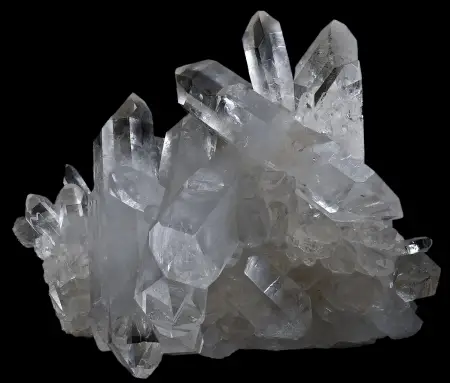Most minerals like quartz are regarded to be precious natural materials. Some rocks, however, are deemed worthless. Nevertheless, certain rocks like granite are considered very valuable. Quartz and granite are formed from molten rock. They are also both deemed very useful and pricey. So how do you differentiate quartz from granite? Read on to examine the difference between the two.
Summary Table
| Quartz | Granite |
| A component of granite | Made up of quartz, feldspar and other minerals |
| Fine-grained texture | Coarse-grained texture |
| Colorless and translucent but also comes in light colored hues | Marble-like appearance, comes in a spectrum of colors mostly with touches of red, pink, gray, black and white |
| Often used to make jewelry | Used as kitchen countertops, exterior or interior building walls |
Definitions

Quartz is a mineral found in the Earth’s continental crust. It is noted to be the second most abundant mineral next to feldspar. The name was derived from the ancient Greek word kruos meaning “icy cold.” Ancient philosophers believed that the mineral was a form of “supercooled ice.” Quartz has a fine-grained texture. It has a sandy, waxy feel. In the present day, the purest form of quartz is referred to as “rock crystal.” This pure form of quartz is colorless and translucent. There are also colored varieties of quartz such as amethyst (purple hues) and rose quartz (pink to red colors) among others. All these are considered semi-precious gemstones and are popular in jewelry-making.

Granite is an igneous (or magmatic) rock, formed when magma cools and solidifies. Granite comes from the Latin word granum, which means “grain.” The name is related to the coarse-grained texture of the rock. Granite is made up of a host of minerals, primarily quartz and feldspar. This combination makes it a hard and tough material. Granite comes in a spectrum of colors depending on its mineral composition. It is non-porous; hence, fluids cannot pass through it easily. Because of its physical properties, granite has gained widespread appeal for use as kitchen countertops, building facades or interior wall material.
Quartz vs Granite
So what’s the difference between quartz and granite? Quartz is a component of granite, while granite is made up of quartz, feldspar and other minerals. Quartz has a fine-grained texture as opposed to granite’s coarse-grained surface consistency. The pure form of quartz is colorless and translucent but it may also be various light colors. Granite, on the other hand, often has a marble-like appearance. It comes in a spectrum of colors, primarily with a touch of red, pink, gray, black or white. Quartz is considered to be a semi-precious stone and it is often used to make jewelry. Meanwhile, granite is a sought-after material used in the construction of homes and buildings.
Video
Watch this video for an explanation of the materials that make up granite.





